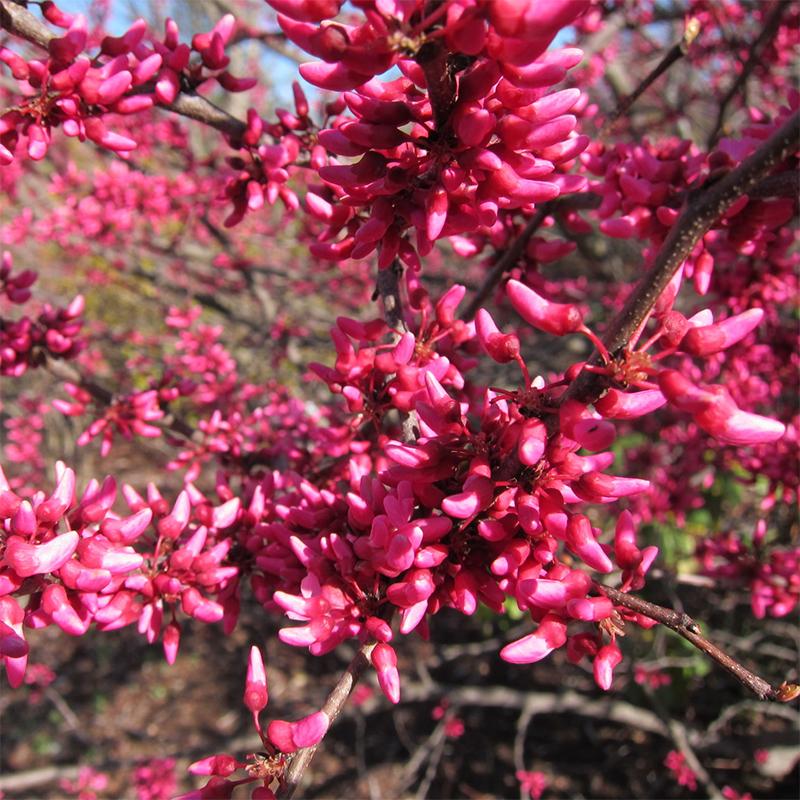By R. Wayne Mezitt
Look most anywhere in early spring throughout the Eastern USA and you’ll see them: the redbuds! Cercis canadensis, the eastern redbud, is a most prolific understory tree, native from Connecticut into Florida and west to Oklahoma, and winter hardy into central New England. Few woody trees put on such a spectacular display every year just as spring is getting underway. For us New Englanders redbuds are less commonly seen, except in planted gardens/landscapes, and that’s a shame.
Maturing in the Northeast to reach about 25 ft. high, redbuds are low- and wide-branching with attractive grey trunks/stems and angular twigs, thriving in full sun or part shade. Profuse clusters of small pea-like flowers emerge all along the branches before the foliage appears, lasting a week or more and imparting a uniquely-stunning floral effect. Distinctive seedpods follow the flowers in mid-summer, turning brown as they mature and often persisting all winter, set in motion by the wind.
In addition to the common native tree, look for named cultivars with lavender, white, pink or near-red flowers; most are sufficiently winter-hardy to perform well in our Zone 6* gardens. Rounded, heart-shaped leaves are clean and typically turn yellow in autumn before dropping. Green leaves are standard for the species, but a range of more colorful and often spectacular red, yellow/multicolored and variegated cultivars are now becoming more widely available.
The last several years have witnessed a dazzling array of new redbud cultivars coming on the market. ‘Forest Pansy’ became commonly available only about twenty years ago to impress us with its dark flowers and unique purple-red spring foliage. Soon thereafter the weeping cultivar ‘Covey’ (also known as ‘Lavender Twist’) was discovered, patented and introduced by Ohio nurseryman Tim Brotzman; this has characteristic green leaves and purple flowers, but its distinctly pendulous branching was unique among the hardy redbuds.
More recently, intensive breeding and selection has produced some very exciting newer cultivars, many of which are now available or will be appearing over the next few years at local garden centers. In addition to ‘Forest Pansy’ and ‘Lavender Twist’, look for ‘Appalachian Red’, ‘Black Pearl’, ‘Flame Thrower’, ‘Merlot’, ‘The Rising Sun’, ‘Vanilla Twist’ and others. Cercis chinensis ‘Don Egolf’ is a cultivar of a more southern species that can be spectacular in milder gardens nearer the ocean; it’s the most profuse-flowering cultivar we’ve seen, every stem covered with clusters of lavender-pink flowers in April.
Redbuds belong in every landscape. They are prized for both their early, “harbinger-of-spring” flowers, and also their significant summer and autumn appeal. Although they are usually not a long-lived plant in this region, the availability of so many enticing new colors and forms make them a worthy choice to add to the enjoyment of your yard.
Footnote: * https://planthardiness.ars.usda.gov/







